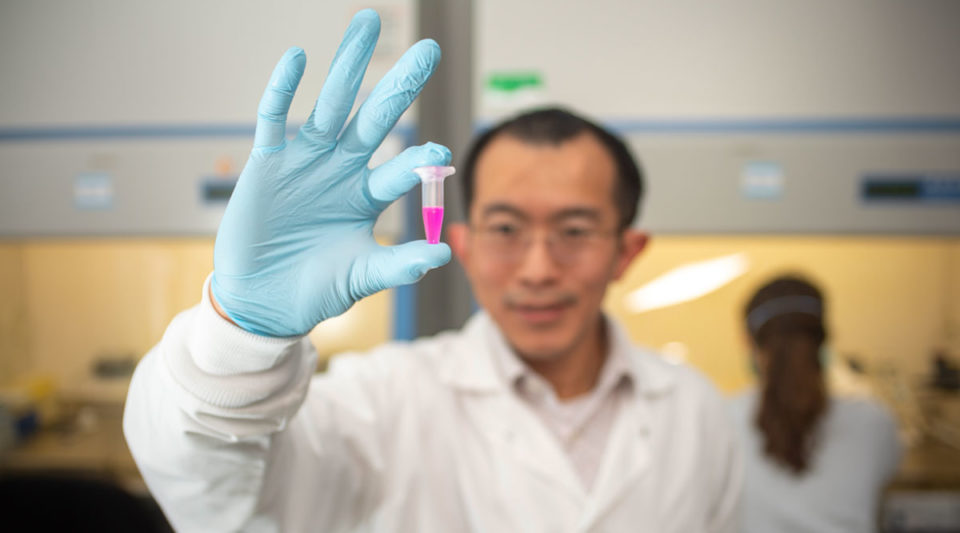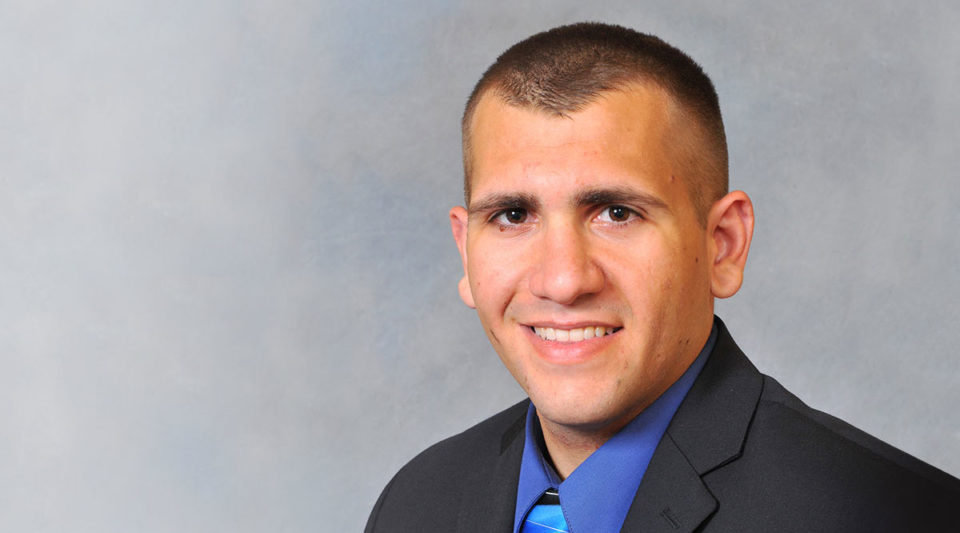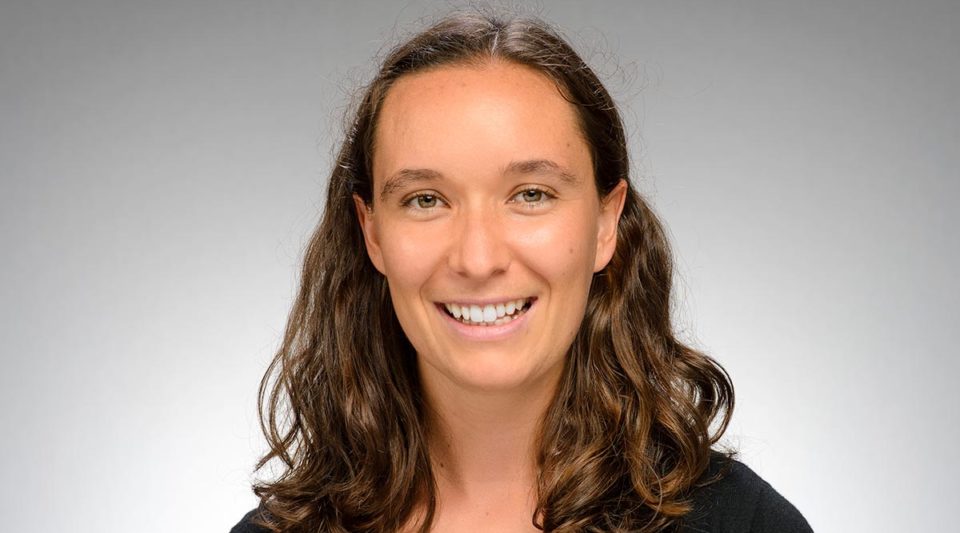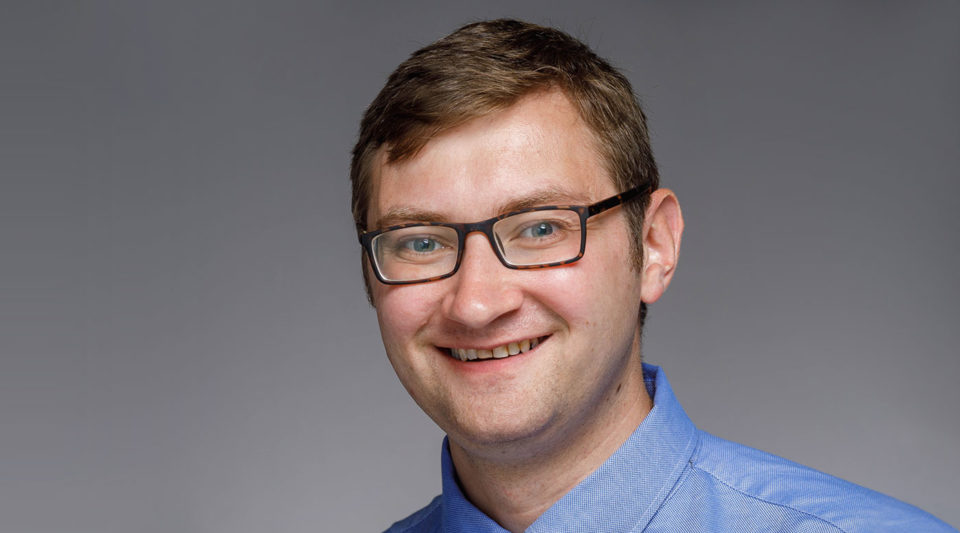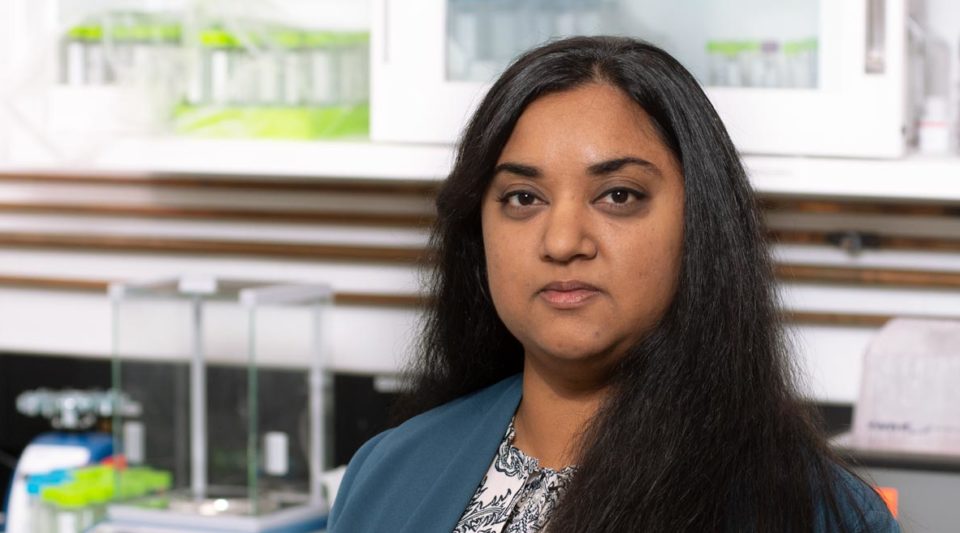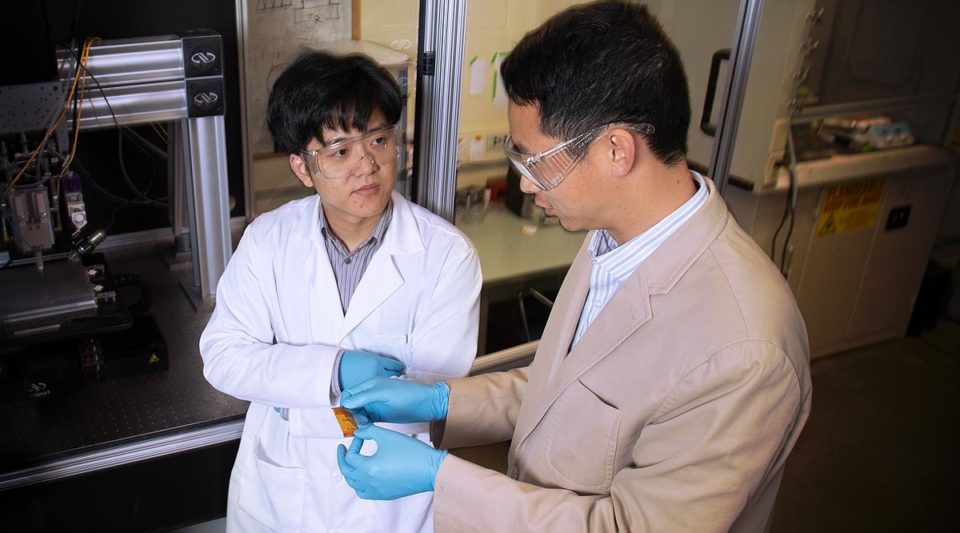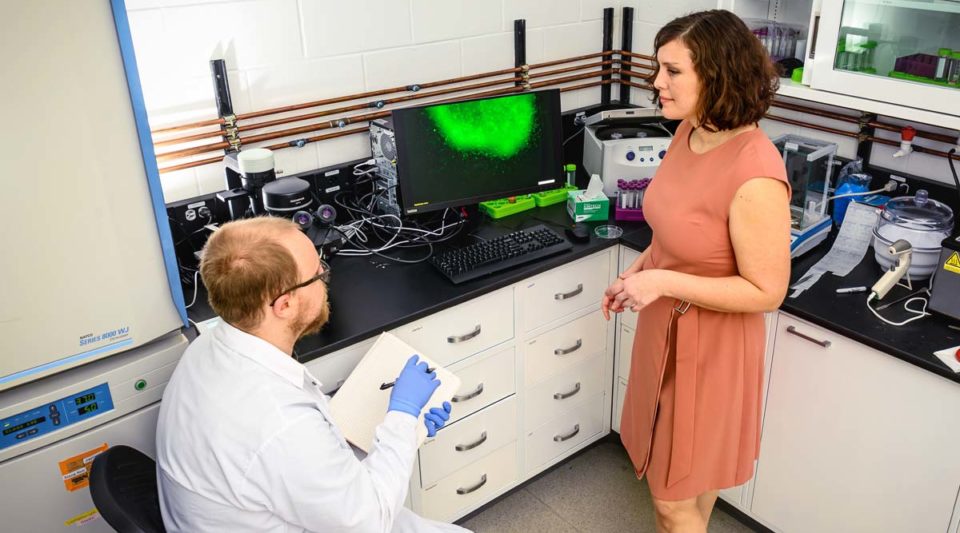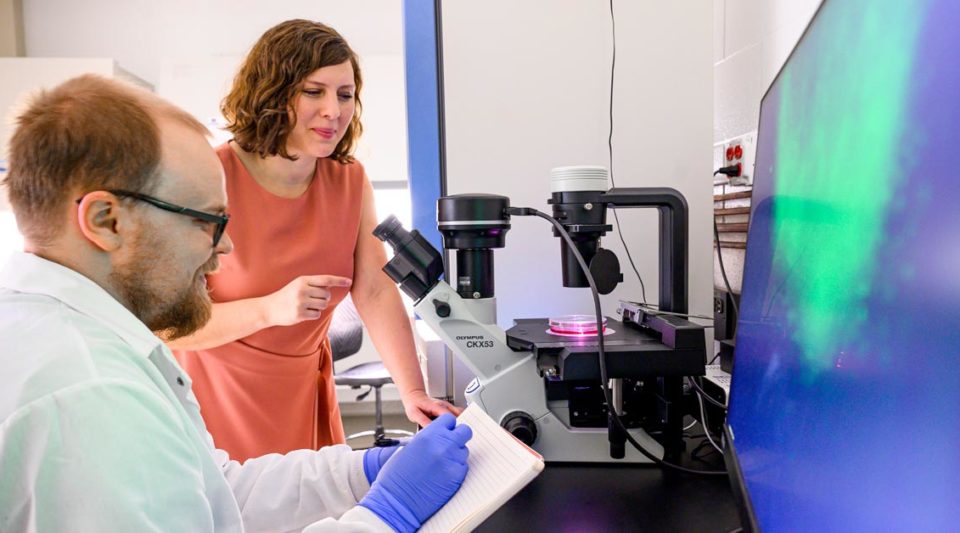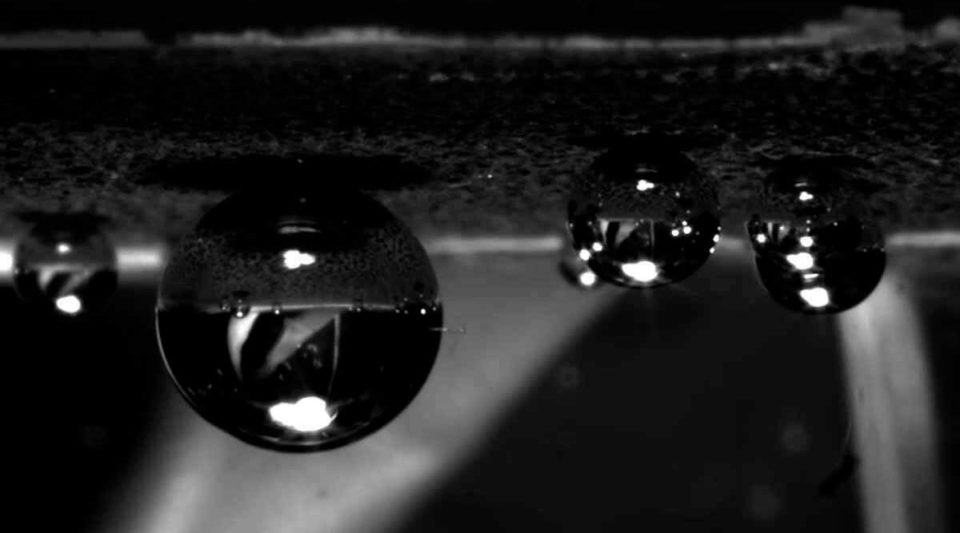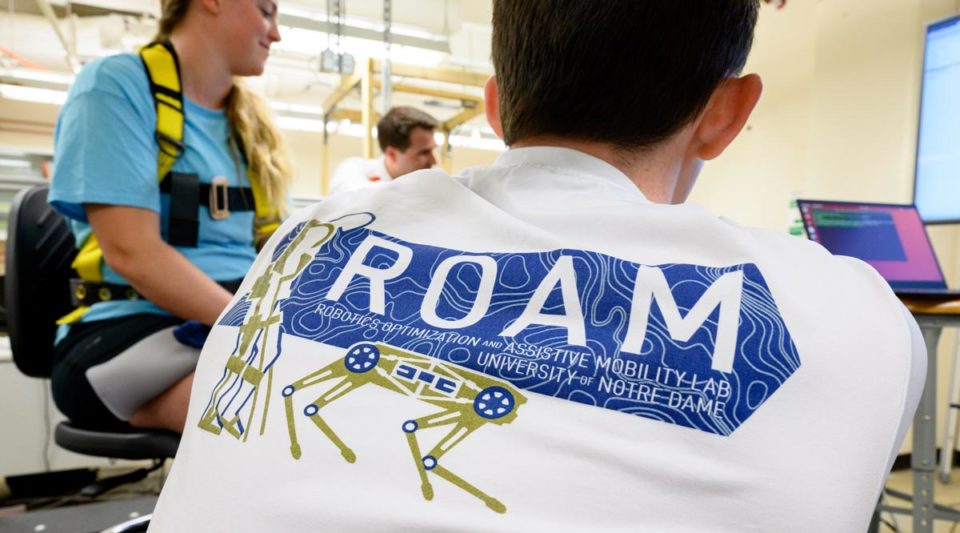
Mobile assist: ROAM engineering lab developing powered prosthesis to aid natural movement
Grasping the railing of a stopped treadmill in the basement of Fitzpatrick Hall of Engineering, Laura Light broke into an electric smile as she used an experimental foot-and-ankle prosthesis to stand on her tiptoes. Patrick Wensing, assistant professor of aerospace and mechanical engineering …
